#illuminated manuscripts
Photo
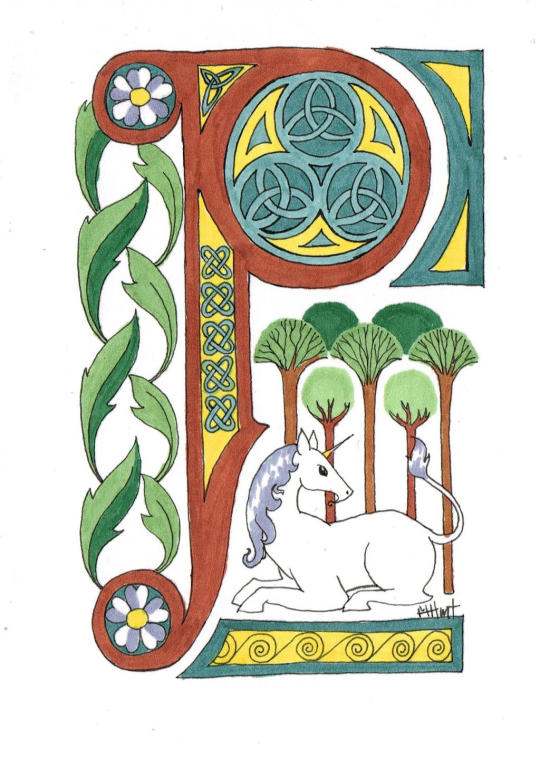
Illuminated Manuscript-P by Lamorien
25 notes
·
View notes
Text
list of medieval literature with links to read.
i’ll continue to update with more texts, better scans, & different editions. enjoy!
#arthurian legend#arthurian legends#arthuriana#ulster cycle#history#medieval literature#med lit#illuminated manuscript#illuminated manuscripts#translations#translation#english translations#english translation#resource#resources#book recommendations#book reccs#arthurian preservation project#my post
1K notes
·
View notes
Text

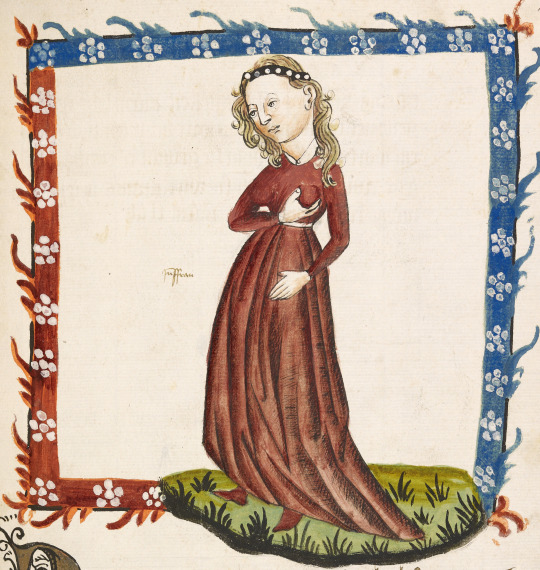
comfort boob grab
in an astrological-astronomical manuscript, germany, ca. 1445
source: Berlin, Staatsbibliothek, Ms. germ. fol. 244, fol. 142r
#iykyk#medieval art#medieval women#illuminated manuscripts#15th century#illumination#medieval#astrology#medieval fashion
2K notes
·
View notes
Text

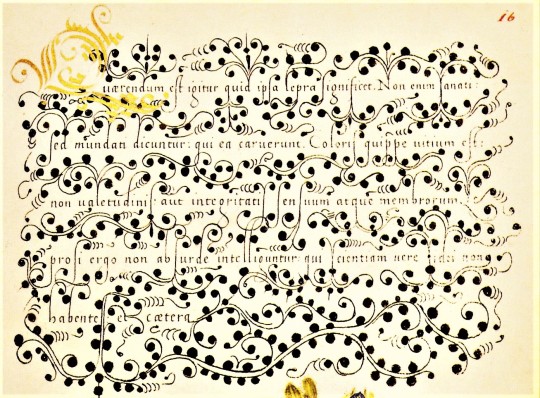

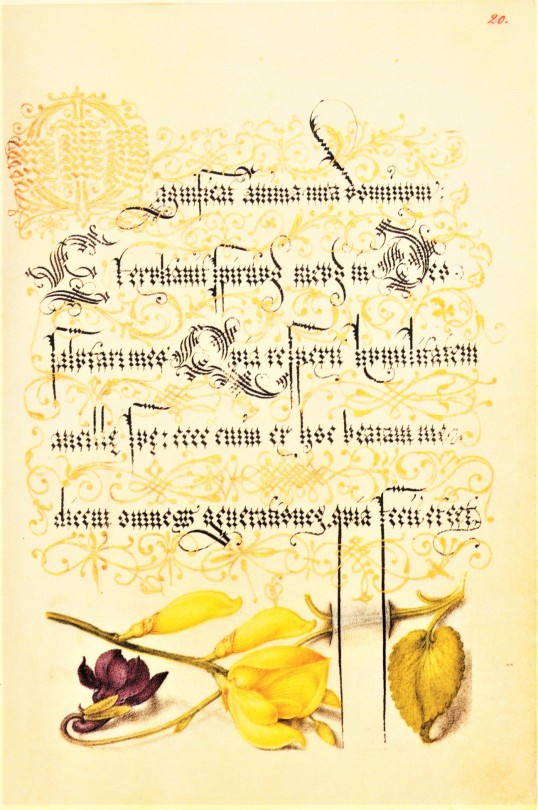









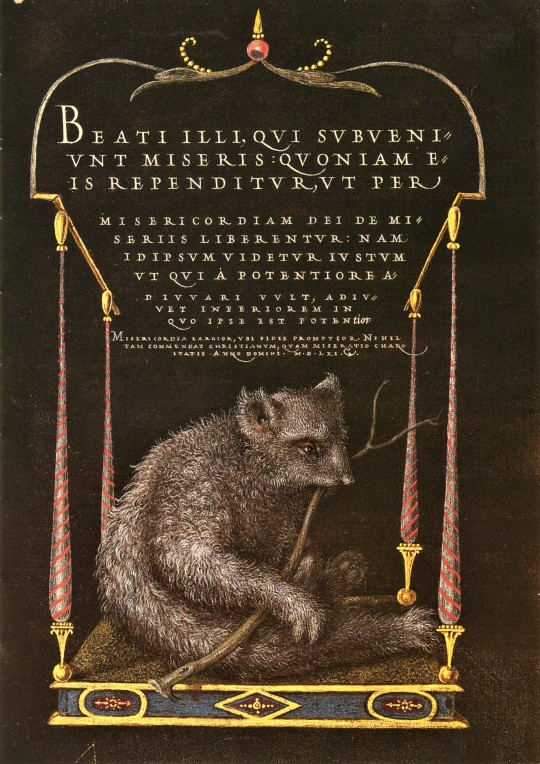
Typography Tuesday
We return to our facsimile of a 16th-cnetury calligraphic manuscript, Mira Calligraphiae Monumenta, or Model Book of Calligraphy, written in 1561/62 by Georg Bocskay, the Croatian-born court secretary to the Holy Roman Emperor Ferdinand I, and illuminated 30 years later by Flemish painter Joris Hoefnagel for the grandson of Ferdinand I, Emperor Rudolph II. The manuscript was produced by Bocskay in Vienna to demonstrate his technical mastery of the immense range of writing styles known to him. To complement and augment Bocskay's calligraphy, Hoefnagel added fruit, flowers, and insects to nearly every page, composing them so as to enhance the unity and balance of the page’s design. Although the two never met, the manuscript has an uncanny quality of collaboration about it.
Our facsimile was the first facsimile produced from the collection at the J. Paul Getty Museum in Los Angeles. It was printed in Lausanne, Switzerland by Imprimeries Reunies and published by Christopher Hudson in 1992.
View another post from Mira Calligraphiae Monumenta,
View more Typography Tuesday posts.
#Typography Tuesday#typetuesday#Mira Calligraphiae Monumenta#or Model Book of Calligraphy#Georg Bocskay#Joris Hoefnagel#illuminated manuscripts#manuscripts#manuscript facsimiles#facsimiles#calligraphy#letter forms#letters#J. Paul Getty Museum#Imprimeries Reunies#Christopher Hudson#Ferdinand I#Rudolph II
828 notes
·
View notes
Text
Upcoming Exhibit and Lecture: Illustrating the Renaissance Book: From Illumination to Woodcut
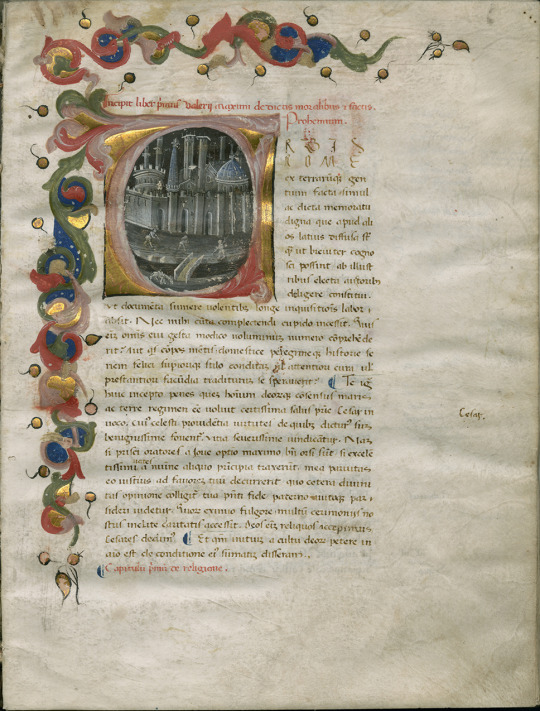
Valerius Maximus (1st c. AD). Factorum ac dictorum memorabilium libri IX. Italy. 15th c. Parchment,126 fols. Fol. 5r

Full-page illumination from Carta Executoria de hidalguia de sangre a pedimento de Don Juan de Mansilla como curador de Doña Francisca de Mansilla, hija de Baltasar de Mansilla, vecinos de la villa de Aranda de Duero. Valladolid, 1636 Parchment, 93 fols. Fol. 2r

Full-page woodcut depicting the procession of Priapus, the Greek god of animal and vegetable fertility. Hypnerotomachie, ou Discours du songe de Poliphile Ed: Jean Martin Paris: Jean le Blanc for Jacques Kerver, 1561 Fol. 69r. Loan courtesy of William P. Heidrich
Come explore a selection of manuscripts and early printed books from the 15th to the 17th centuries that were illustrated with illuminations and woodcuts! The display will be up in the Hatcher Gallery Exhibit Room from 6 September to 14 December.
And join us on Wednesday 13 September at 4p in the Hatcher Gallery event space or on zoom a for lecture based on the exhibit.
We hope to see you there!
#events#exhibits#special collections#special collections libraries#libraries#archives#libraries and archives#special collections and archives#manuscripts#manuscript culture#early printed books#book illustrations#illustrated books#illustrations#illumination#illuminated manuscripts#manuscript illumination#woodcuts
87 notes
·
View notes
Text

Folio 7 verso, Les Évangiles de Saint-Médard de Soissons
#manuscript#illuminated manuscripts#gospel book#Les Évangiles de Saint-Médard de Soissons#c: carolingian#y: 800s#l: latin#t: page
61 notes
·
View notes
Text

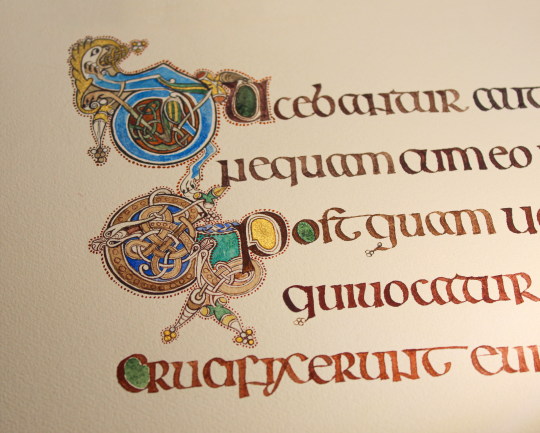
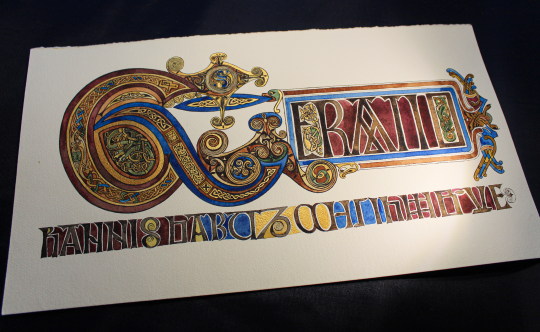
My copy from the Book of Kells, illuminated manuscript created in the 9th century in Ireland
#calligraphy#Illuminated Manuscripts#broad pen#insular uncial#insular halfuncial#halfuncial#medieval#Book of Kells#celtic ornament#celtic art#celtic#celtic style#celtic knot#celtic design#celtic illumination#celtic calligraphy#irish calligraphy#Ireland#irish#medieval art#medieval book
40 notes
·
View notes
Text

Say it with flowers!
This image of an elephant and castle comes from a 12th-century copy of the Roman writer Orosius's History Against the Pagans. It illustrates a passage on King Pyrrhus and his battle elephants. If you look closely, a soldier has popped out the side of the castle to direct the war elephant with some fragrant blooms.
Materials: parchment, ink and pigments
Date: mid-12th century
Origin: an Augustinian priory in Kirkham, Yorkshire
Now British Library, Burney MS 216, f. 33r
#elephant#elephants#medieval elephants#war elephant#elephant and castle#yorkshire#orosius#medieval art#illuminated manuscripts#12th century
20 notes
·
View notes
Video
youtube

A Short History of the Medieval Illuminated Manuscripts

16 notes
·
View notes
Text

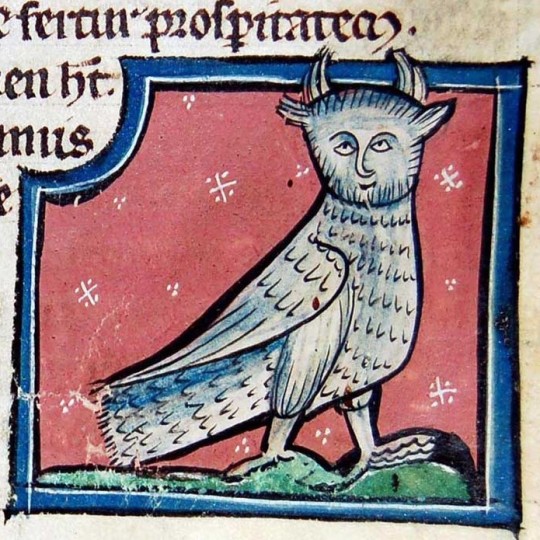
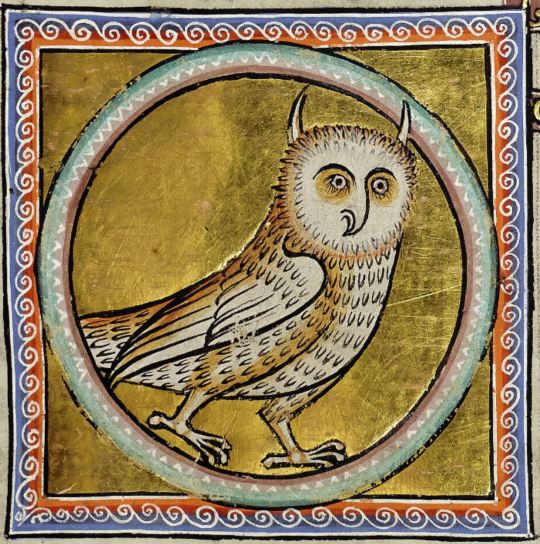

Important #PSA for those who may be sharing medieval owl memes for #Superb_Owl Sunday as these owls (especially #1) often show up in them, and unfortunately there are unfunny reasons why they look the way it do. :/
#DYK that some medieval bestiary owls carry antisemitic context that may not be obvious to the casual modern viewer? Sadly, these nocturnal owls were used to symbolize Jews living in darkness and rejecting the light of Christ.
Features to watch for include: anthropomorphized faces with beaks made to resemble hooked noses; owl "horns" drawn like devil horns (and the horned hats some Jews had to wear); and "mobbing" by other birds (a real-life behavior, but also used to symbolize attacking a sinner).
For more info:
1. Miyazaki, Mariko. "Misericord owls and medieval anti-Semitism." In The Mark of the Beast: The Medieval Bestiary in Art, Life, and Literature, pp. 23-43. Routledge, 2013.
2. Greatley-Hirsch, Brett. "From Jew to Puritan: the emblematic owl in early English culture." In ‘This Earthly Stage’: World and Stage in Late Medieval and Early Modern England, pp. 131-172. Brepols, 2010. PDF available online.
Image sources:
British Library, Harley MS 4751 (Harley Bestiary), folio 47r
Westminster Abbey Library MS 22 (Westminster Bestiary), f. 40
Aberdeen University Library, Univ. Lib. MS 24 (Aberdeen Bestiary), f. 50r
Bibliothèque Nationale de France, fr. 1951 (Bestiaire d'amour rimé), f. 15v
#owl#owls#bird#birds#birds in art#medieval bestiary#medieval manuscripts#illuminated manuscripts#medieval art#European art#illustration#works on paper#antisemitism#jewish culture#PSA#DYK#Superb Owl Sunday#animals in art
131 notes
·
View notes
Photo

'Psalter ('The Luttrell Psalter')', 1325-1340
MS 42130, folio 176v
Source
114 notes
·
View notes
Note
Lionel for vulgate passage he's so imporant to me
Lancelot Part I: Lionel and Bors Are Taken to the Lake to Live with Lancelot

And you, my friend, get a special addition. Here's an illumination of Saraide riding away with Lionel and Bors (after she transforms them back into boys).
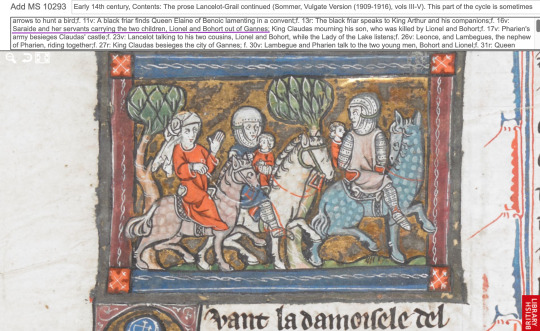
Send me a character and I'll reply with a Vulgate passage!
#arthurian legend#arthurian legends#arthuriana#arthurian mythology#arthurian literature#lionel#bors#sir lionel#sir bors#vulgate#the vulgate#vulgate cycle#quotes#illuminated manuscript#illuminated manuscripts#ask#sanddef
39 notes
·
View notes
Text

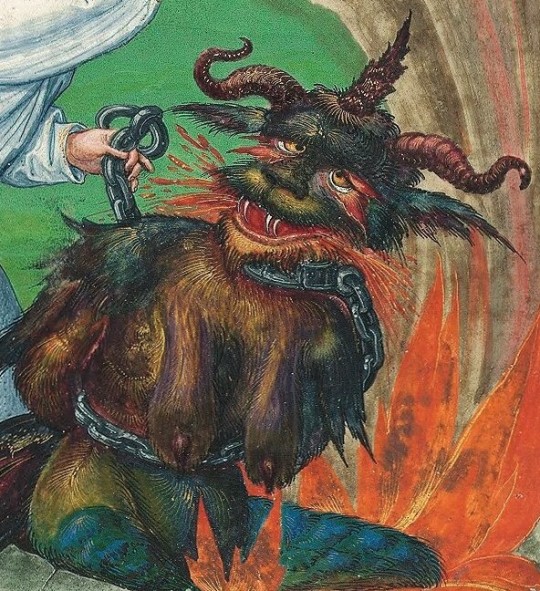
demon being punished by an angel
in the "ottheinrich-bibel", vol. 8, illuminated in 1530 by mathis gerung
source: Munich, Bayerische Staatsbibliothek, Cgm 8010(8, fol. 303 verso [detail].
#illumination#illuminated manuscripts#demon#angel#miniature#renaissance#ottheinrich-bibel#mathis gerung#matthias gerung
2K notes
·
View notes
Text
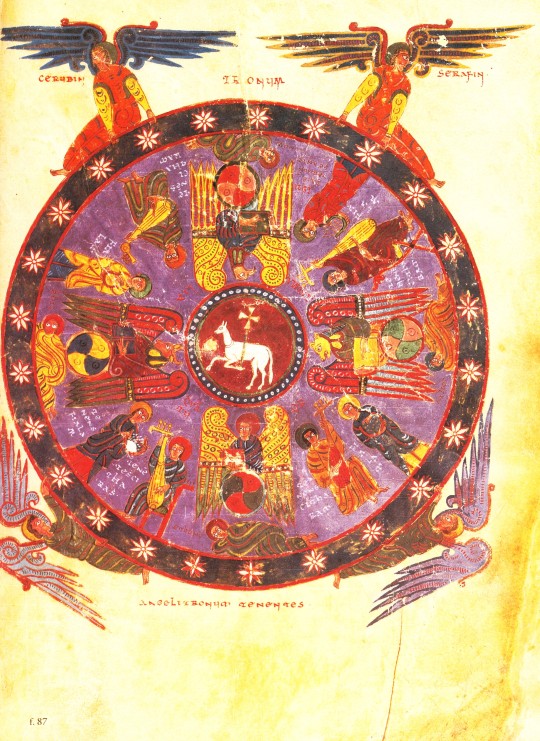

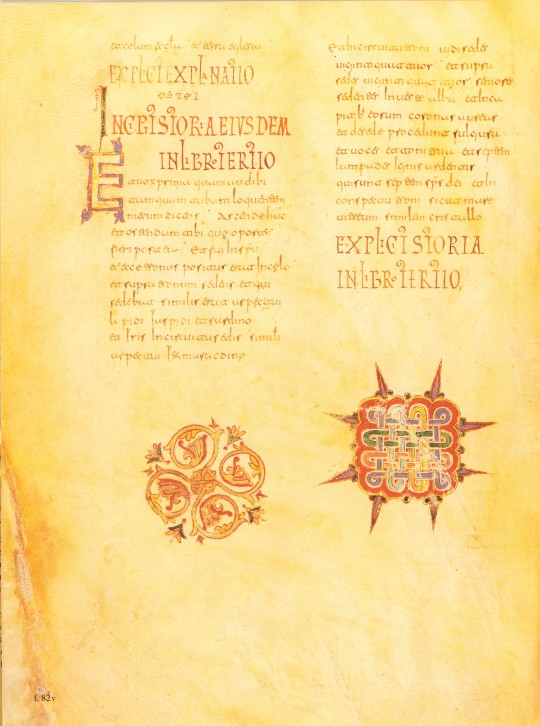
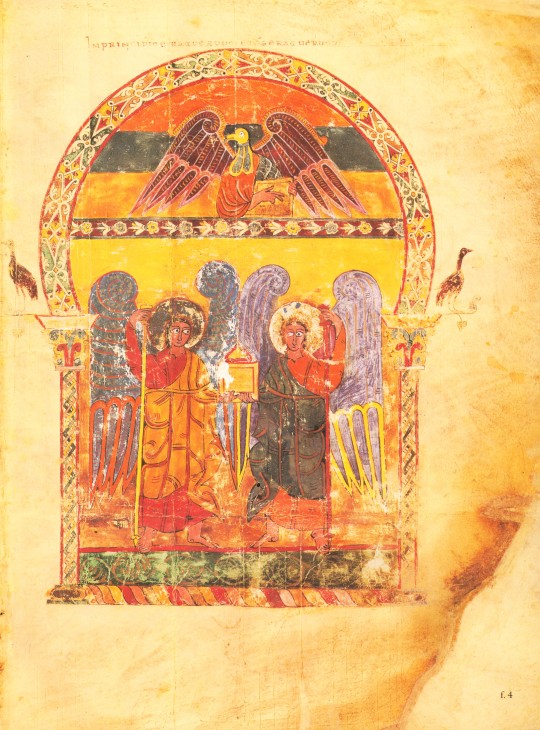




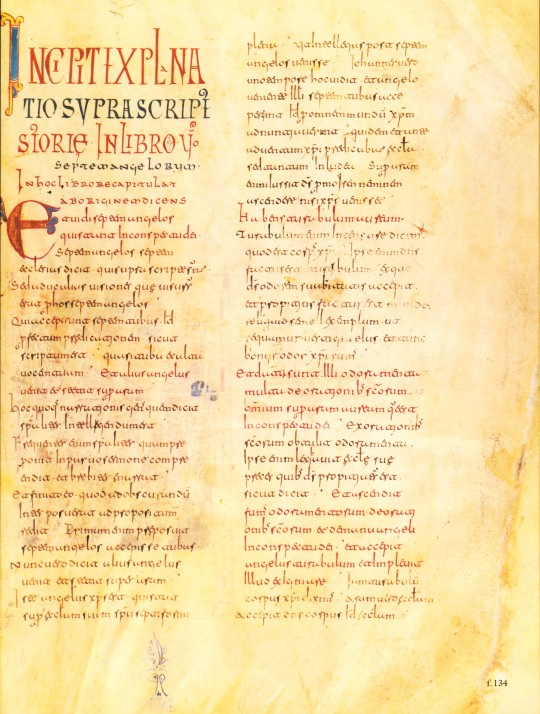
Welcome to Manuscript Monday!
In this series we will periodically focus on selections from our manuscript facsimile collection. Today we present selections from the Morgan Beatus Manuscript, reproduced as A Spanish Apocalypse, The Morgan Beatus Manuscript in New York by George Braziller, Inc. in association with the Pierpont Morgan Library in 1991. The original manuscript, made around 10th century CE at the scriptorium of San Miguel de Escalada in Spain by a monk named Maius, is the earliest surviving illuminated version of the monk Beatus of Liébana's commentary on the biblical Book of Apocalypse (also known as the Book of Revelation). The text of the Book of Revelation makes up the first part of the manuscript, and Beatus’s commentary comprises the second part. The Book of Revelation tells of the end-times in Christianity, during the final judgement of humanity by God. The story within this Biblical book was also seen by those living during the Latin medieval era as representative of the beginning of something new: God’s celestial kingdom. Due to this view of the book, many artists incorporated imagery from this part of the Bible in their work.
Produced in Al-Andalus, or Muslim-ruled Spain, the artistic style of this work combines both Muslim and Christian visual traditions to create a beautifully illuminated manuscript that supplements the commentary by the monk. This artistic style is known as the Mozarabic, which comes from the Arabic mustaʿrib, meaning ‘Arabicized’. Interestingly, this style of art can only be seen in Christian religious art and architecture from Spain at the time, as non-religious artistic objects made by Christians look so similar to Islamic versions of the same works that they cannot be identified as intentionally Christian. Some key Islamic artistic elements within the manuscript include buildings with horseshoe arches, intricate geometric and vegetal patterns as borders for larger images, and the large, bulging eyes of the illustrated animals.
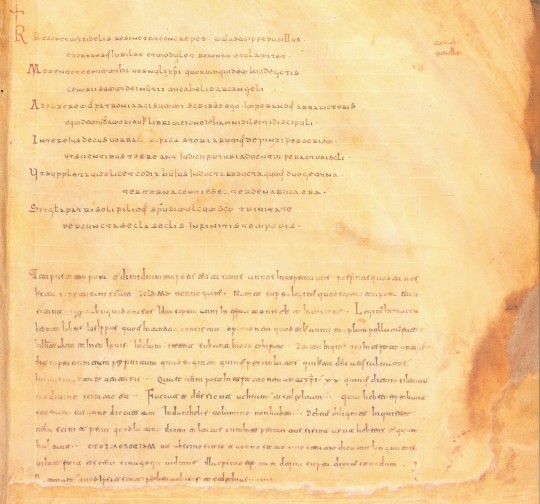
Another interesting aspect of this specific manuscript is the colophon at the end of the manuscript. It tells readers about the circumstances surrounding the creation of this book, including the maker, the patron, the year it was made, and an explanation about why Maius created the manuscript ("I write this . . . at the command of Abbot Victor, out of love for the book of the vision of John the beloved disciple. As part of its adornment I have painted a series of pictures . . . so that the wise may fear the coming of the future judgement of the world's end."). Colophons in medieval manuscripts are not usually as detailed, so the inclusion of all this information contributes greatly to the knowledge and history surrounding the Morgan Beatus Manuscript.
View more Manuscript Monday posts.
– Sarah S., Special Collections Graduate Intern
#manuscript monday#manuscripts#morgan library#morgan beatus manuscript#Beatus of Liébana#Spain#Christian art#Mozarabic#Islamic art style#facsimilies#Spanish art#Medieval art#Spanish medieval art#A Spanish Apocalypse#George Braziller#illuminated manuscripts#Sarah S.
132 notes
·
View notes
Text
An Extraordinary New Acquisition!


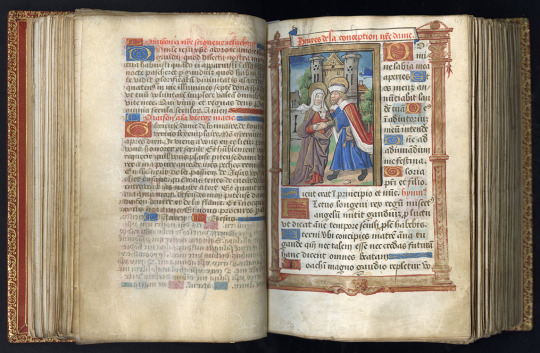
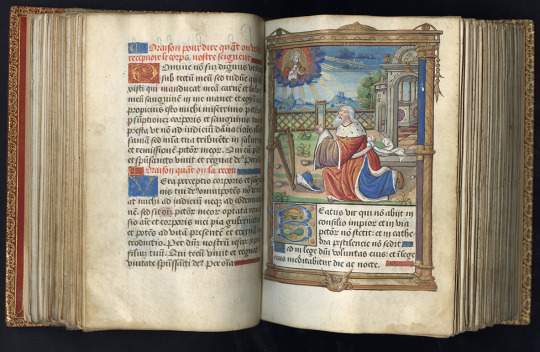
We are delighted to announce an important recent acquisition made possible by the generosity of Katharine J. Kilgour: a manuscript containing the texts of a Book of Hours and a Psalter. Written in Latin and French, it was exquisitely illuminated by one of the leading miniaturists working in Paris in the first two decades of the sixteenth century: Jean Coene IV. Read more!

Detail of miniature by Jean Coene IV, "Lamentation over the Dead Christ", in the opening of the Office of our Lady of Compassion, f. 28. Book of Hours & Psalter. Parchment manuscript, 256 folios. Paris, ca. 1505-1515.
#illuminated manuscripts#manuscript illumination#medieval manuscripts#book of hours#books of hours#psalter#new acquisition#acquisitions#acquisition#libraries and archives#libraries#special collections#special collections libraries#special collections and archives#archives
331 notes
·
View notes
Text

Folio 3 recto, Melisende Psalter
22 notes
·
View notes